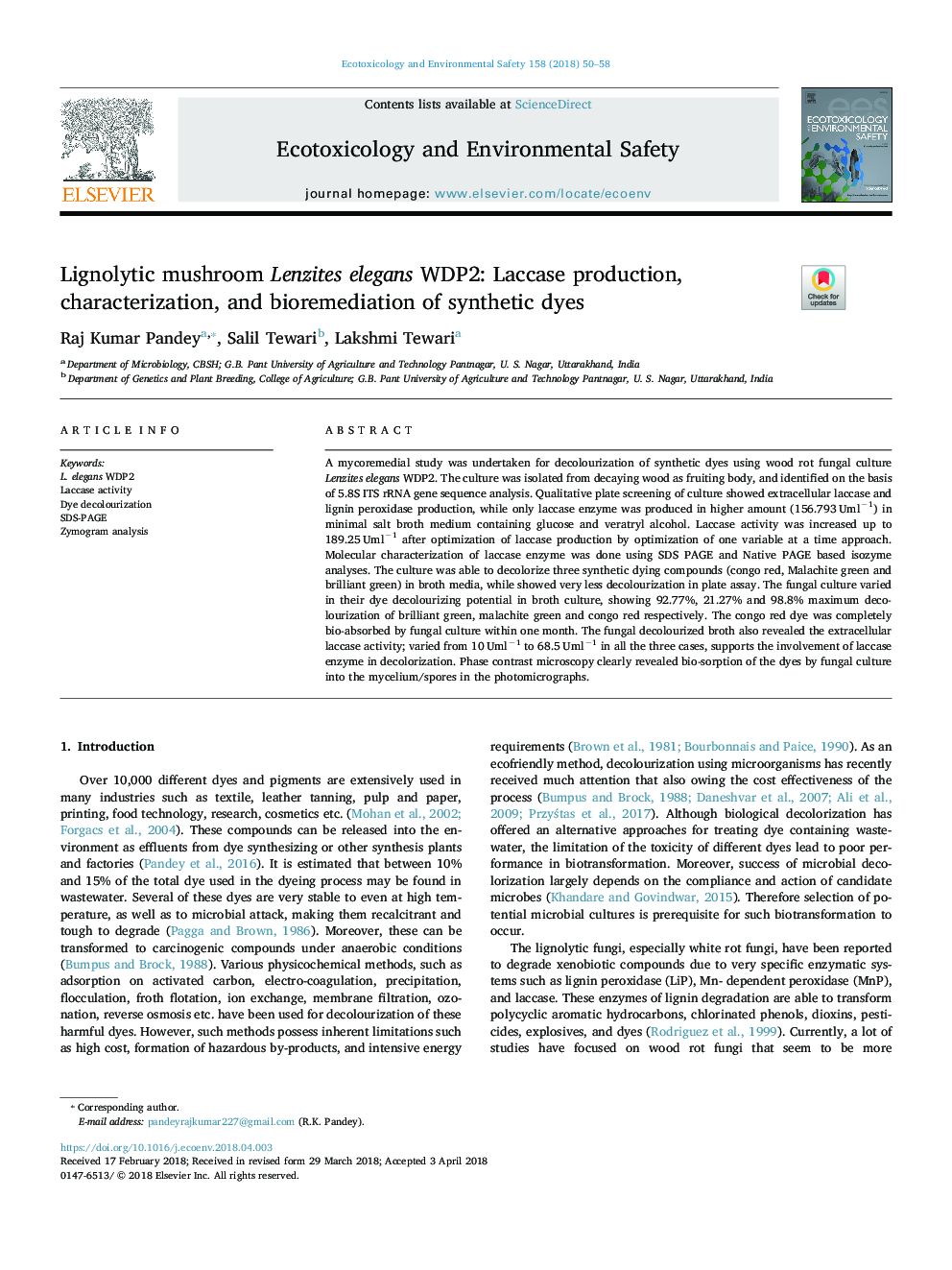| Article ID | Journal | Published Year | Pages | File Type |
|---|---|---|---|---|
| 8853769 | Ecotoxicology and Environmental Safety | 2018 | 9 Pages |
Abstract
A mycoremedial study was undertaken for decolourization of synthetic dyes using wood rot fungal culture Lenzites elegans WDP2. The culture was isolated from decaying wood as fruiting body, and identified on the basis of 5.8S ITS rRNA gene sequence analysis. Qualitative plate screening of culture showed extracellular laccase and lignin peroxidase production, while only laccase enzyme was produced in higher amount (156.793â¯Umlâ1) in minimal salt broth medium containing glucose and veratryl alcohol. Laccase activity was increased up to 189.25â¯Umlâ1 after optimization of laccase production by optimization of one variable at a time approach. Molecular characterization of laccase enzyme was done using SDS PAGE and Native PAGE based isozyme analyses. The culture was able to decolorize three synthetic dying compounds (congo red, Malachite green and brilliant green) in broth media, while showed very less decolourization in plate assay. The fungal culture varied in their dye decolourizing potential in broth culture, showing 92.77%, 21.27% and 98.8% maximum decolourization of brilliant green, malachite green and congo red respectively. The congo red dye was completely bio-absorbed by fungal culture within one month. The fungal decolourized broth also revealed the extracellular laccase activity; varied from 10â¯Umlâ1 to 68.5â¯Umlâ1 in all the three cases, supports the involvement of laccase enzyme in decolorization. Phase contrast microscopy clearly revealed bio-sorption of the dyes by fungal culture into the mycelium/spores in the photomicrographs.
Related Topics
Life Sciences
Environmental Science
Environmental Chemistry
Authors
Raj Kumar Pandey, Salil Tewari, Lakshmi Tewari,
